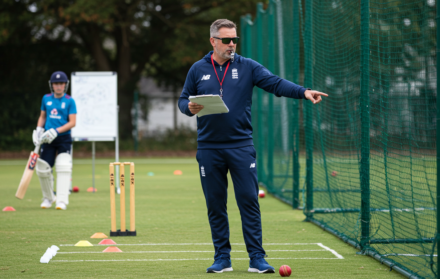
Top Bowling Achievements and Records in World Cup Cricket History
Cricket World Cup is one of the most prestigious tournaments in the sport of cricket, featuring national teams from around the world. While batting often takes the spotlight, bowling plays a crucial role in determining the outcome of matches. Understanding the significance of bowling in World Cup cricket and recognizing top bowling achievements can provide insights into the unparalleled skill and talent of bowlers.
The history of the Cricket World Cup sets the stage for remarkable bowling accomplishments. The tournament has witnessed memorable moments, intense rivalries, and outstanding performances since its inception in 1975.
Bowlers play a key role in World Cup matches, with their skills and strategies dictating the flow of the game. The ability to take wickets, restrict runs, and maintain control over the opposition’s batting lineup is instrumental in achieving victory.
Top bowling achievements in World Cup cricket are a testament to the skill and dedication of bowlers. Some notable achievements include the best bowling figures in a single match, the most wickets taken in a single World Cup tournament, and the leading wicket-takers in World Cup history. The fastest bowling spells, best economy rates, and records set by spinners have also left an indelible mark on World Cup history.
These bowling achievements not only showcase individual brilliance but also contribute to the overall success of teams in the tournament. The ability to deliver under pressure and consistently perform at the highest level is a measure of success in World Cup cricket.
Understanding the significance and impact of bowling in World Cup cricket, as well as recognizing the top bowling achievements, provides a deeper appreciation for the skill, strategy, and excitement that bowlers bring to the game.
History of World Cup Cricket

The history of World Cup Cricket is an enthralling narrative of victory, competition, and indelible moments. It all commenced in 1975 with the inaugural tournament held in England. Since then, the tournament has expanded in scale and popularity, captivating enthusiasts across the globe.
From the iconic triumph of the West Indies in the first edition to the impressive dominance displayed by Australia and India in recent times, the World Cup has witnessed extraordinary performances and historic accomplishments.
Amidst these memorable events, a noteworthy instance occurred during the 1999 semi-final when Shane Warne of Australia bowled the ‘Ball of the Century‘, stunningly dismissing England’s Mike Gatting and leaving both spectators and commentators in a state of astonishment.
Significance of Bowling in World Cup Cricket
When it comes to World Cup Cricket, one cannot underestimate the significance of bowling. The bowlers play a key role in shaping the outcome of matches and often have a significant impact on the final result.
In this section, we’ll dive into the importance of bowling in World Cup Cricket, exploring the pivotal role of bowlers and the direct impact their performances can have on the outcome of matches, influencing the direction of the tournament.
Key Role of Bowlers
Bowlers play a crucial role in the game of cricket, influencing the outcome of World Cup matches through their bowling performances. Here are some important aspects highlighting the significance of bowlers in World Cup cricket:
- Wicket-taking ability: Bowlers have the power to take crucial wickets, which can turn the game in their team’s favor. They have a key role in the team’s success.
- Restricting runs: Bowling economically is crucial in limiting the opposition’s scoring and building pressure on the batting team. This is another important aspect of the key role of bowlers.
- Bowling partnerships: Bowlers work together to create pressure and take wickets, forming strong bowling partnerships. This collaboration plays a key role in their team’s strategy.
- Bowling strategies: Bowlers use various techniques such as swing, spin, and pace variations to outwit the batsmen and take wickets. These strategies are an integral part of their key role in the game.
- Momentum shift: A strong bowling performance can change the momentum of the game, providing a boost to the bowler’s team. This is yet another example of the key role bowlers play in World Cup cricket.
Impact of Bowling Performances on World Cup Matches
Bowling performances have a significant impact on World Cup matches, often determining the outcome of the game. The ability of bowlers to take wickets and restrict the opposition’s scoring rate can change the course of a match.
In a high-pressure tournament like the World Cup, an outstanding bowling spell can swing the momentum in favor of a team and turn the game on its head.
Notable examples of such impactful performances include Mitchell Starc’s crucial wickets in the 2015 World Cup final and Lasith Malinga’s four-wicket haul in the 2011 final.
These performances underline the crucial role bowlers play in shaping the destiny of World Cup matches.
Fun Fact: In the history of the World Cup, no bowler has taken a hat-trick in the final of the tournament.
Top Bowling Achievements in World Cup Cricket

Unveiling the pinnacle of bowling excellence in World Cup Cricket! Get ready to dive into the realm of jaw-dropping performances as we explore the top bowling achievements in this prestigious tournament.
From astounding bowling figures in a single match to record-breaking wicket tallies, and from lightning-fast bowling spells to historical records set by spinners, we’ll uncover the remarkable feats that have etched their names in World Cup history.
Brace yourself for a rollercoaster ride filled with awe-inspiring moments and statistical marvels that will leave you in awe.
Best Bowling Figures in a Single Match
| Bowler | Team | Opponent | Figures | Year |
|---|---|---|---|---|
| Glenn McGrath | Australia | Namibia | 7/15 | 2003 |
| Gary Gilmour | Australia | England | 6/14 | 1975 |
| Lasith Malinga | Sri Lanka | South Africa | 6/38 | 2007 |
These exceptional bowling figures, the Best Bowling Figures in a Single Match, showcase the bowlers’ ability to dominate the opposition and make a significant impact on the outcome of the match. It is a remarkable achievement to take such a high number of wickets in a single match, displaying skill, accuracy, and the ability to exploit the weaknesses of the batsmen.
Most Wickets in a Single World Cup Tournament
During a single World Cup tournament, bowlers aim to secure the most wickets, a factor crucial for their team’s success.
Here’s a compilation of top bowlers who have achieved remarkable wicket tallies in a single World Cup tournament: Glenn McGrath from Australia leads with 26 wickets, followed closely by Muttiah Muralitharan and Ajit Agarkar, both from Sri Lanka and India respectively, each with 23 wickets.
Shane Warne from Australia secured 20 wickets, while Wasim Akram from Pakistan claimed 18 wickets.These bowlers displayed exceptional skills and made significant contributions to their teams’ performances, emphasizing their ability to consistently take wickets throughout the tournament.
Leading Wicket-Takers in World Cup History
These exceptional bowlers have left an indelible mark on the cricketing world, their performances shaping the outcomes of matches and contributing significantly to their teams’ success.
Among these standout performers, Muttiah Muralitharan leads the pack with a staggering 68 wickets in 40 matches, followed closely by Glenn McGrath, who secured 71 wickets in 39 matches.
Wasim Akram, renowned for his lethal bowling, claimed 55 wickets in 38 matches, while Chaminda Vaas and Lasith Malinga showcased their prowess with 49 and 56 wickets respectively in their World Cup careers.
Their consistent ability to take wickets under pressure has earned them a revered status in cricketing circles. These players consistently deliver at the highest level, showcasing their skills and determination on the grandest stage of them all.
Their remarkable success throughout their World Cup careers underscores their enduring impact on the sport and secures their place in the annals of cricket history.
Fastest Bowling Spells in World Cup Matches

The fastest bowling spells in World Cup matches have had a lasting impact on cricket history. These lightning-fast deliveries have not only amazed spectators but also played a significant role in changing the course of matches. Here are some notable instances of the fastest bowling spells in World Cup matches:
- Jeff Thomson: Known for his sheer pace, Thomson’s spell of fast bowling in the 1975 World Cup saw him achieve speeds of over 160 km/h.
- Shoaib Akhtar: The Pakistani speedster set a new record for the fastest delivery in World Cup history during the 2003 tournament, clocking 161.3 km/h.
- Brett Lee: Another Australian, Lee consistently touched the 150 km/h mark and delivered one of the fastest spells in World Cup matches during the 2003 and 2007 tournaments.
These fast bowling spells not only made batsmen tremble but also showcased the incredible skill and athleticism of these bowlers. The impact of their raw pace on the game cannot be overstated, making them legends in World Cup cricket history.
Best Economy Rates in World Cup History
In the annals of World Cup Cricket history, certain bowlers have distinguished themselves by achieving the best economy rates, thereby significantly contributing to their team’s success. Among these standout performers, Glenn McGrath of Australia holds a remarkable economy rate of 3.96, setting a formidable standard for bowlers worldwide. Anil Kumble from India follows closely with an impressive rate of 4.12, showcasing his precision and effectiveness on the field.
Joining the ranks of elite bowlers with exceptional economy rates are Joel Garner from the West Indies, Wasim Akram from Pakistan, and Chaminda Vaas from Sri Lanka, each demonstrating exceptional control and accuracy with rates of 3.09, 3.89, and 3.97 respectively. Their ability to keep the opposition’s scoring rate in check has been instrumental in putting their teams in advantageous positions during crucial matches.
These bowlers’ exceptional economy rates not only reflect their individual skill and prowess but also highlight the importance of accuracy and control in limited-overs cricket. By consistently delivering tight and economical spells, they have played a pivotal role in stifling opposition batsmen and shaping the outcomes of matches.
If you’re looking for tips to improve your economy rate, focus on bowling in the right areas, varying your pace and length, and accurately analyzing the batsman’s weaknesses.
How Do These Achievements Measure Success in World Cup Cricket?

Achievements in World Cup Cricket are measures of success that reflect the impact and skill of bowlers. These accomplishments determine the performance and contribution of the bowlers towards their team’s success in the tournament.
Examples of these achievements include taking the most wickets, having the best bowling average, achieving a five-wicket haul, and winning the Man of the Tournament award.
These accomplishments demonstrate a bowler’s ability to consistently take wickets, contain runs, and influence the outcome of matches.
They serve as benchmarks to evaluate a bowler’s effectiveness and their impact on the team’s overall performance. So, How Do These Achievements Measure Success in World Cup Cricket?





